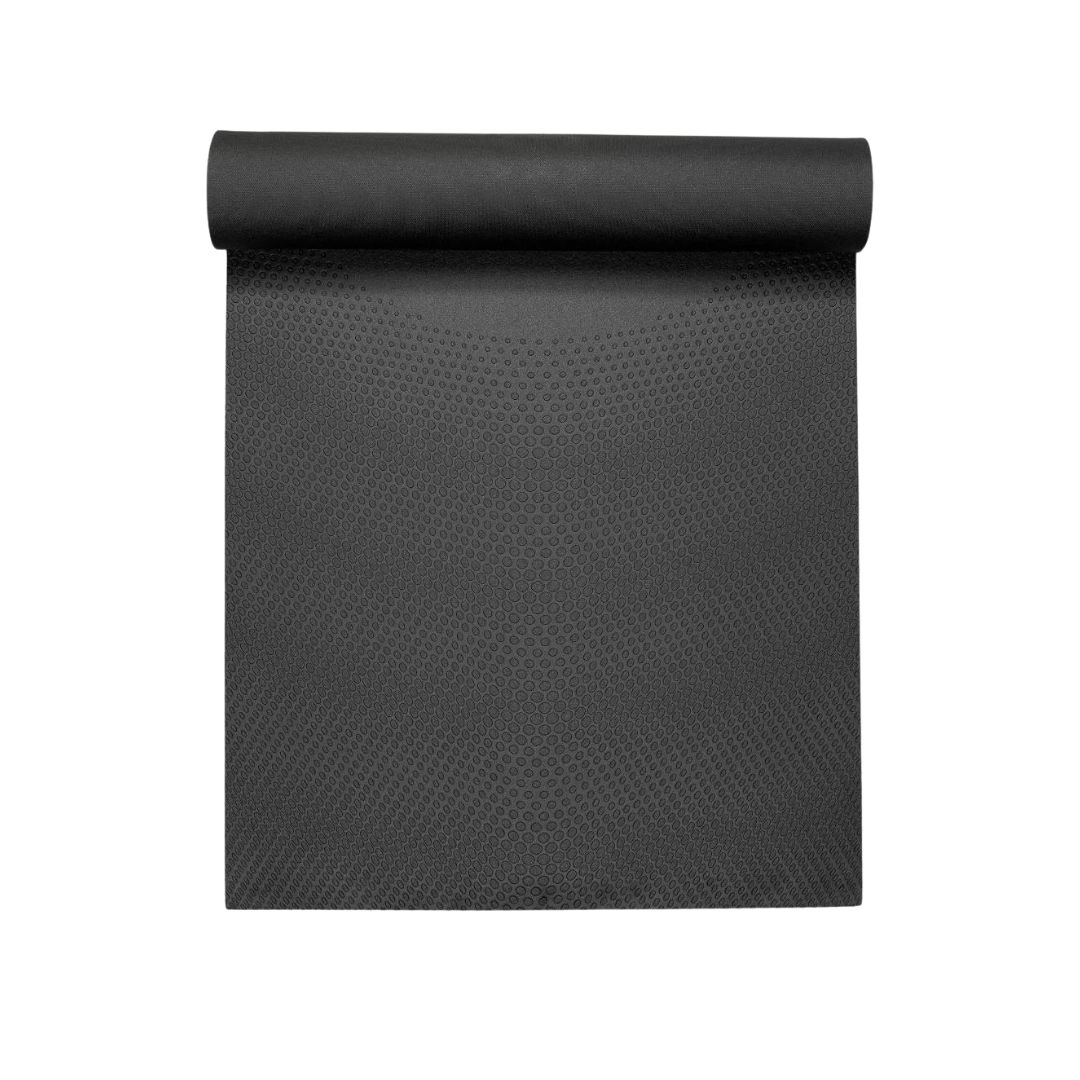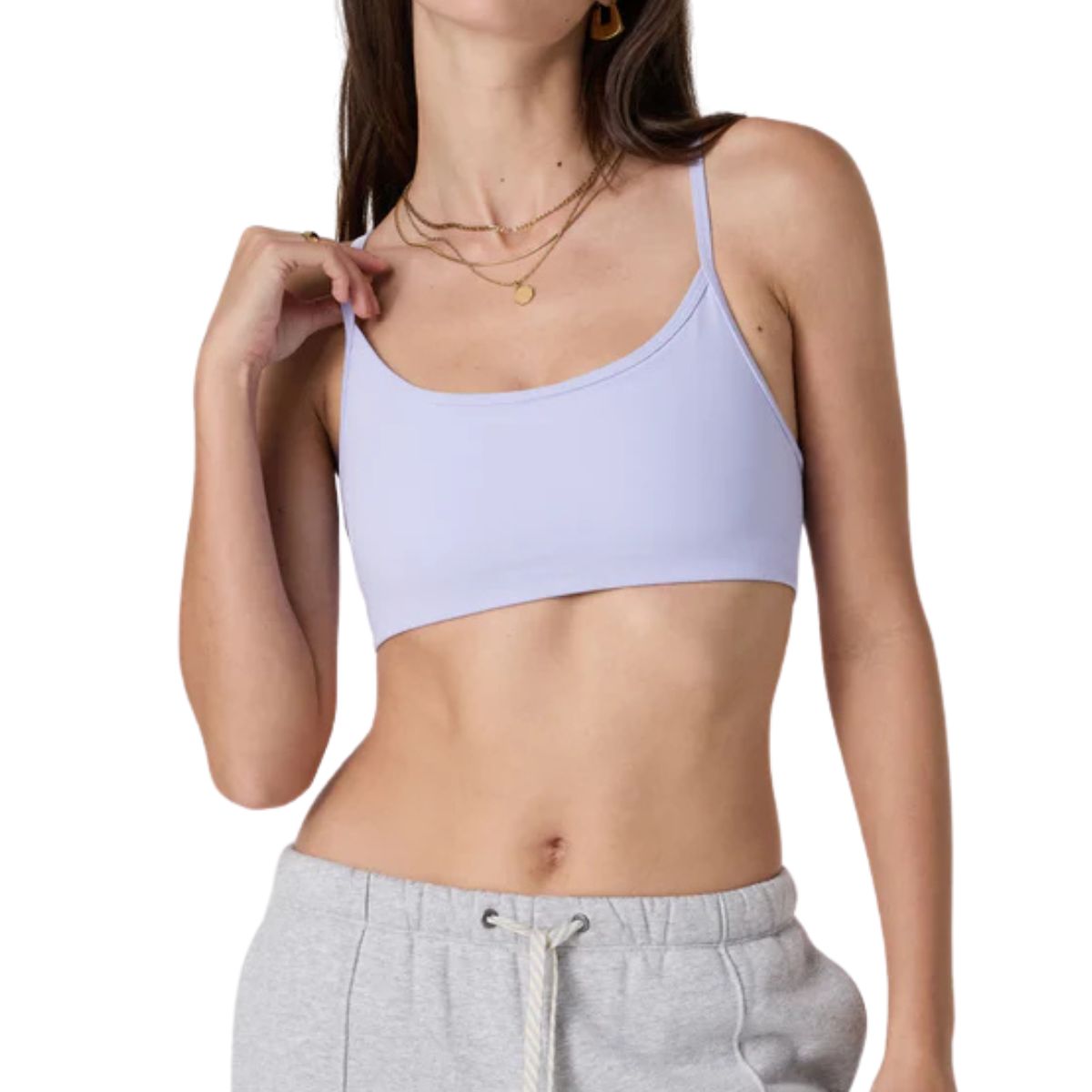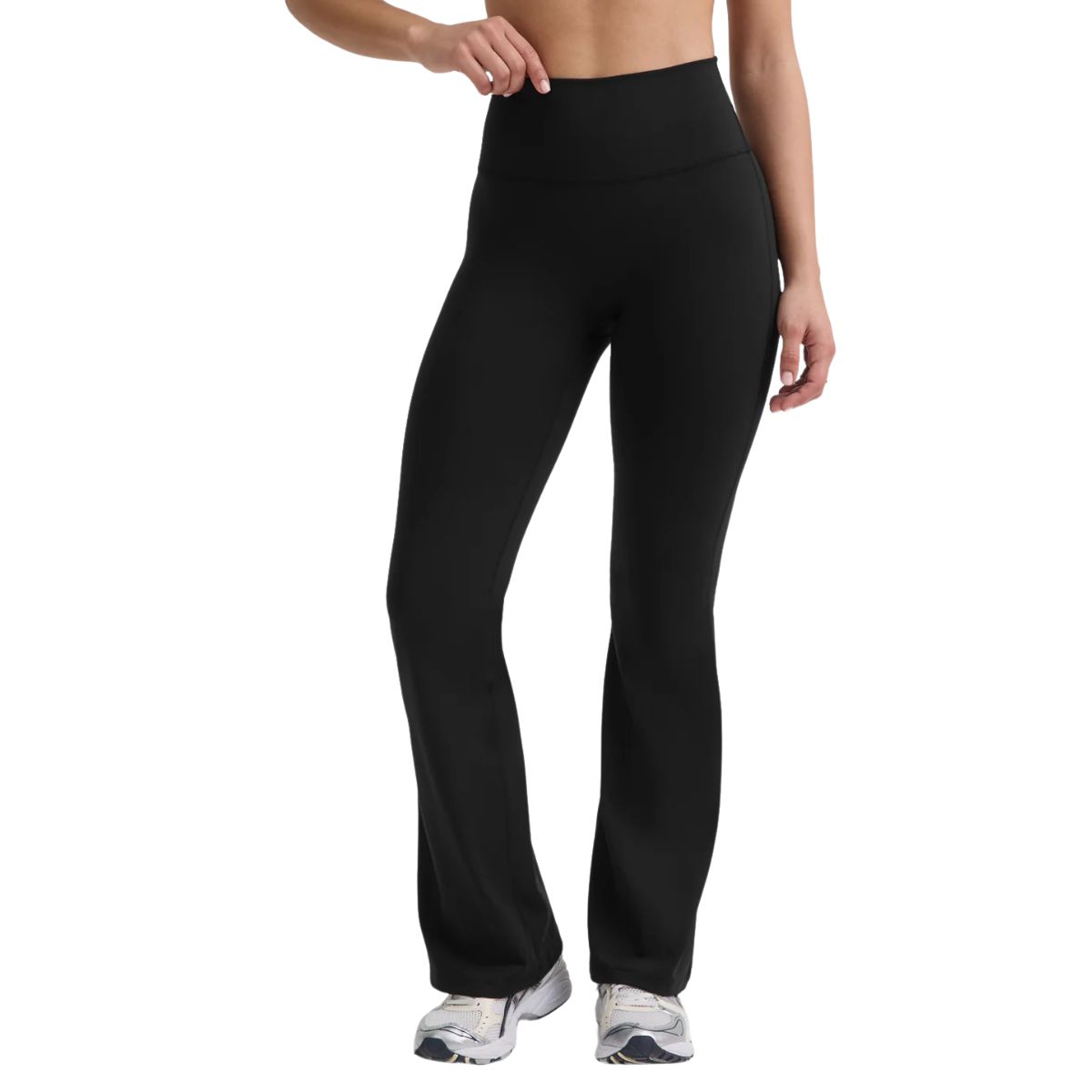I Tried a Pilates Open Leg Rocker Every Day For a Week – and Honestly? I Can’t Believe the Results
Core strength and flexibility, unlocked.


Like a lot of us, I discovered Pilates exercises during the pandemic. Before that, I’d dipped in and out of the practice, usually on the advice of a physio when recovering from an injury or as a way to build up my core strength. But when lockdown hit and workout options were limited, Pilates became a regular part of my routine, and it’s stayed that way ever since.
The benefits have been hard to ignore. My posture has improved, my core has become noticeably stronger, and I’ve seen real improvements in other areas of my training too, especially in my running technique and ability to bounce back from stumbles or sharp changes in pace. Perhaps more surprisingly, though, I’ve noticed shifts mentally too. I’m the kind of person whose mind often drifts throughout class, to my to-do list, my next meeting or what I’m cooking for dinner. Yet, when I manage to stay tuned into my breath and body awareness, I feel significantly more grounded and present, and that sense of focus tends to carry through into the rest of my day.
That might sound like a stretch, but there’s research to support it. Take this 2019 study, for example, which found that even a short-term Pilates programme significantly improved participants' sustained attention and cognitive function (two skills you need in spades to master some of Pilates' more demanding moves).
Whilst I’d now consider myself fairly experienced in Pilates, I have to admit that I still tend to coast through classes without fully thinking about what each movement is doing for my body. I’m also guilty of not practising the trickier exercises at home, assuming I’ll eventually get the hang of them in class. And, to be fair, I usually do. But there are some moves which have stubbornly resisted that approach - think the Pilates teaser, the Pilates roll up and, most frustratingly, the open leg rocker.
The Pilates open leg rocker is the ninth exercise in the classical Pilates repertoire, and one of those deceptively simple-looking exercises. It requires a strong core, flexible spine, solid balance and unwavering concentration. For the past few weeks, despite making a conscious effort to improve on this movement, I’ve found myself wobbling out of shape, unable to pause in that perfectly balanced "V" at the top.
I knew I couldn’t just keep throwing myself into the open leg rocker and hoping for the best, so I turned to Pilates instructor Gabriella Antoniades-Parsons for guidance. She confirmed what I’d started to suspect: that mastering challenging movements in Pilates isn’t just about drilling the move itself, it’s also about building the right foundations around it. Pilates is an interconnected discipline, and by focusing on exercises that develop stability, mobility and alignment, you lay the groundwork to approach complex movements with control. Once I started working on those, things began to click. And within just a week of consistent, targeted practice, I saw real progress.
Science has my back again here. Research published in the Journal of Bodywork and Movement Therapies shows that targeted Pilates training improves both balance and spinal mobility, two factors which are essential for healthy ageing and injury prevention. So it turns out that my mission to master the open leg rocker hasn’t just been about ticking off a Pilates milestone. For anyone who does regular high-impact training, like running, learning to properly support and control the spine through this kind of movement can be key to avoiding injury, improving joint health, and sustaining performance long term.
Celebrity news, beauty, fashion advice, and fascinating features, delivered straight to your inbox!
Intrigued to find out how I got on? Keep scrolling. But if you’ve already mastered the open leg rocker, check out the other Pilates moves we’ve been trying, including much-loved Pilates scissors and Pilates toe taps. In need of some quick Pilates workout inspiration? Don't skip our round-up of the best 10-minute Pilates workouts.
The Pilates open leg rocker has become a firm favourite move - so I tried it for a week
What Is a Pilates Open Leg Rocker?
“The open leg rocker, also known as the rocker with open legs, is an intermediate exercise, and the ninth exercise in the original classical mat repertoire developed by Joseph Pilates,” explains Antoniades-Parsons. “It’s performed by starting seated, leaning back and grabbing the fronts of your ankles. With the legs long, you roll back on the inhale, and then rock back up to seated on the exhale.”
It might look simple, but as Marsha Lindsay, Founder and Director of Nobu Pilates, explains, this move actually “requires a strong amount of control and centring. Abdominal strength and a great connection to the posterior chain are important in finding the flow and balance required for the movement.”
What Are the Benefits of Pilates Open Leg Rockers?
From improved core strength, proprioception (your awareness of where your body is in space) to flexibility, posture and coordination, the benefits of Pilates are well documented. But what specifically are we looking to gain through practising the open leg rocker?
“Many people have a tight lower back,” explains Lindsay, “which can be the result of tightness or weak abdominal muscles. The open leg rocker asks us to explore deep rounding of the spine, and in practising this movement over time, we can develop the lower abdominal connection, improve spinal flexion and the mindbody connection.”
Antoniades-Parsons concurs. “As well as being a great exercise for abdominal strength and stability, the open leg rocker gently massages the spine, opens up the lower back, stretches the legs, and improves balance.”
She adds that the open leg rocker is also a fantastic stepping stone towards mastering the advanced Pilates teaser, another of the exercises I’m keen to nail by the end of 2025.
How To Perform a Pilates Leg Rocker With Good Form
As with all Pilates moves, the goal is not to move as fast as possible, but to master each move with correct form. “I find it helpful to think about your t-shirt being heavy against your chest, and focusing on trying to raise the back of your leggings to the ceiling as you rock back,” says Antoniades-Parsons, who shares her top tips for proper open leg rocker form.
- First, find a C-Curve through your spine, making sure that you are sitting slightly behind the sit bones to help maintain this shape
- Next, tune into your breath. Inhale as you rock back and exhale to bring you back up. This breath pattern will help to create space between your vertebrae
- To maintain the continuous rocking motion, think about your legs taking you back, and your arms bringing you back up
- Remember, try to keep your arms straight as you rock
You don’t have to jump straight into the full movement either, as both Lindsay and Antoniades-Parsons explain.
“To work up to the open leg rocker, it’s a good idea to start by sitting slightly back on your sit bones. Hold the back of your knees with your legs bent, find the C curve in the spine and then start to extend one leg at a time whilst staying seated,” says Antoniades-Parsons. Once you feel comfortable, you can move on to both legs extended. From there, you’re ready to introduce the rocking motion with bent legs and your hands behind your knees, using all of the same cues as the full version.”
Other exercises which complement the open leg rocker, and which I built into my week-long routine, are the Pilates hundred and Pilates rocking like-a-ball movements.
I Tried a Pilates Open Leg Rocker Every Day for a Week - Here’s How I Got On
Before I talk you through how I got on with the open leg rocker, it’s worth noting that there are some cases where you should avoid rolling movements. “It’s best to leave out deep spinal flexion and rolling on the vertebrae if you have any disc issues, or if you’re in the second or third trimesters of pregnancy,” says Lindsay. She reminds us that Pilates is still a fantastic form of exercise in both of these circumstances, but suggests opting for some of the alternative movements in the expansive classical repertoire. If this applies to you, and you’re looking for some guidance, we’d suggest reading our guide to Pilates for lower back pain, or even our first person review of Pregnancy Pilates.
Days One To Three
After months of stubbornly pushing through the full movement with little progress, I’m keen to strip things back to basics on day one.
On the instructors’ recommendations, I start by positioning myself in a seated position on my mat and finding a gentle C-curve in my spine, which feels like pulling my belly button back against my spine and tucking my pelvis underneath me. Naturally, I find myself starting to lean back onto my sit bones, and I start to extend one leg slowly at a time.

Ashleigh finding her balance in the V-sit position
This feels relatively comfortable, so I quickly progress to both legs. That’s when things get interesting. I can feel my lower back start to arch and my balance waver. The temptation to dive straight into the rocking is strong, but this time I’m determined to prioritise form over momentum. I stick with the leg extensions, repeating three sets of ten, focusing on staying stable and engaged throughout.
On day two, I begin my practice by performing some of the complementary moves that Lindsay suggested. Using her guidance, I start with Rocking Like a Ball and the Pilates hundred to fire up my core, and I can immediately feel the difference in how my body responds.
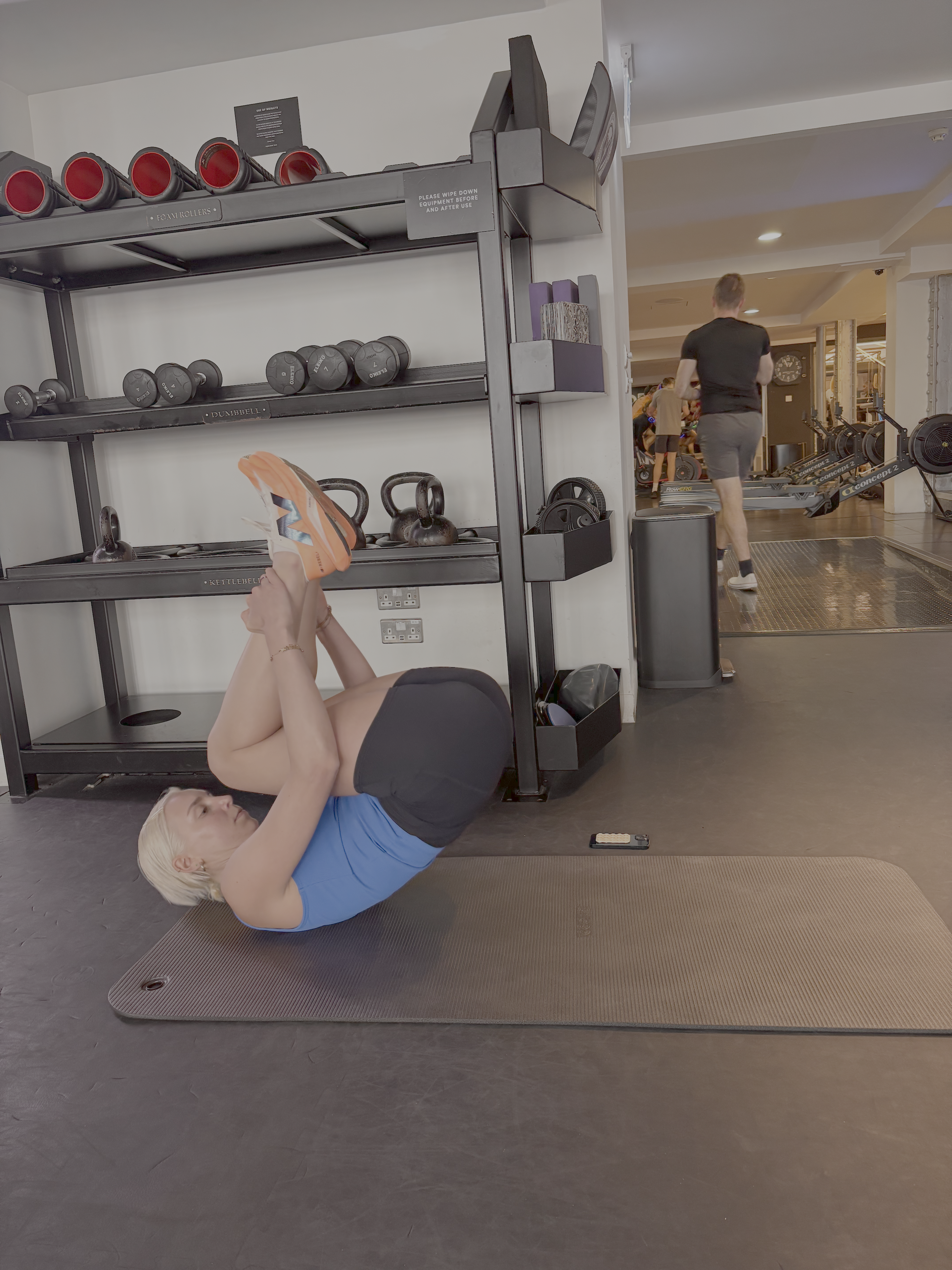
Instead of launching into the full open leg rocker, I keep my legs bent and focus on the rocking motion itself. I’m surprised by how easily I manage the momentum. Getting back to the upright position isn’t the hard part: the real challenge is holding steady at the top. Each time I roll up, my toes want to tap the floor, and my arms lose a bit of tension.
I remind myself of the breathing cues Antoniades-Parsons gave me and realise that I’ve been holding my breath, which isn’t helping. I try again, this time inhaling as I roll down and exhaling on the way back up. It instantly feels more controlled, and suddenly the top position feels more within reach.
On day three, I stick with the bent-leg version again, continuing to focus on my breath. This time, everything feels more connected. My core engages earlier, my arms stay active, and for the first time, I’m able to hold my balance at the top almost every time. It’s not perfect, but it’s progress, and I’m starting to feel confident.
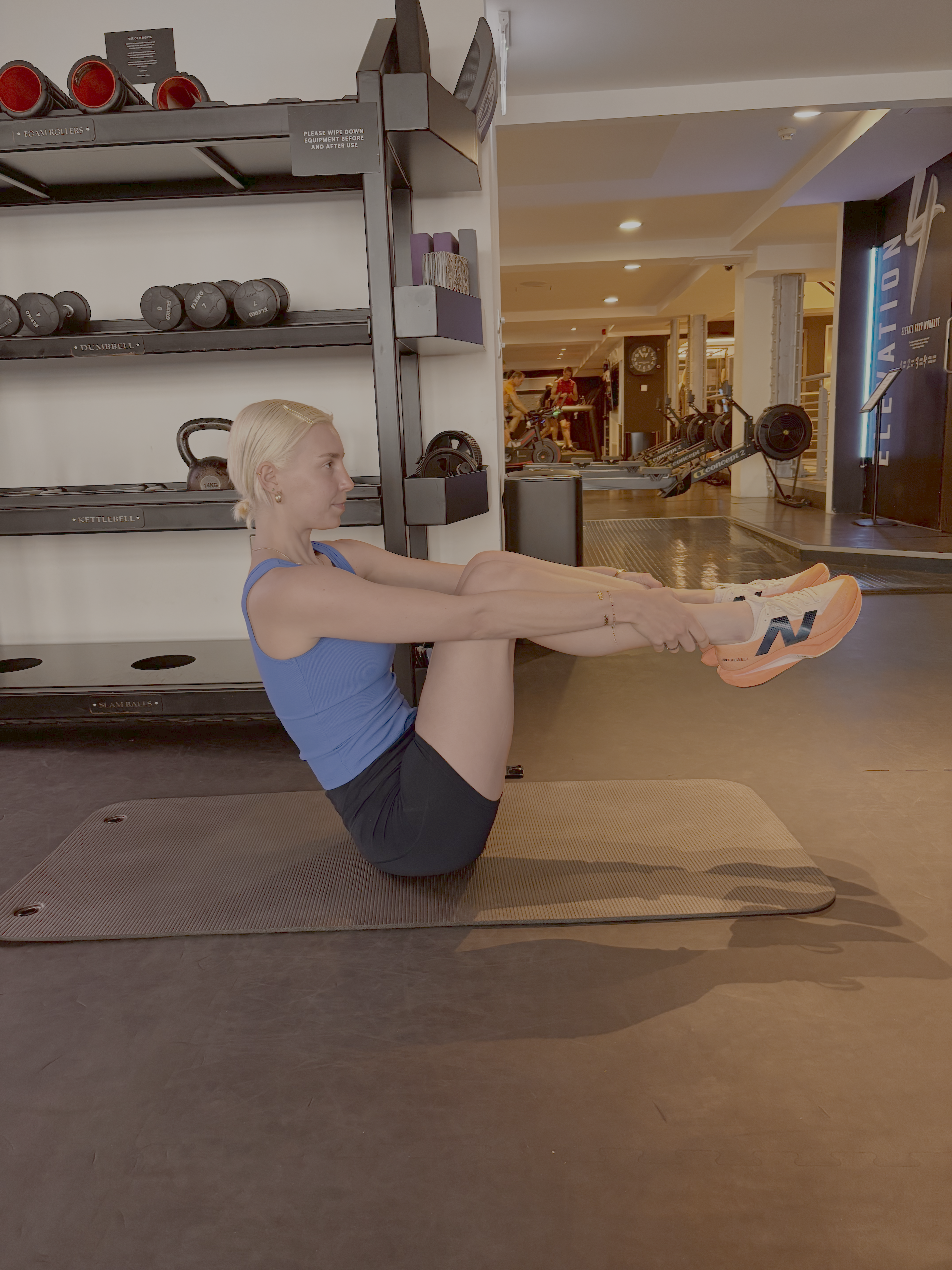
Ashleigh testing out the Pilates open leg rocker with bent legs
Days Four To Seven
For the first half of the week, I’d been squeezing in my practice first thing in the morning, usually on my bedroom floor before I’d even got out of my pyjamas. But on day four, with a work-from-home day in the diary, I decided to swap things around and fit in a session on my lunch break. It was the perfect excuse to step away from my laptop and mobilise my spine, which always feels a bit tight and achy after hours of sitting.
Interestingly, my balance felt noticeably better practising in the afternoon, compared to the morning sessions. It could just have been a sign that I was getting stronger, but I do know that our balance is influenced by all sorts of factors, from body temperature and stress levels to how well you’ve slept, so it could be that the time of day played a role too.
By day five, I’m ready to try the full version of the open leg rocker, and to my surprise, I actually manage it. Holding the C-curve feels more natural after several days of repetition, and I’ve got a much better feel for how much momentum I need to find the "V" shape at the top and pause with control.

Ashleigh holding the Pilates V-Sit position in a gym
I keep practising daily, and each time I find I can manage a few more reps before my form starts to wobble. By day seven, my core is definitely feeling it. I’m achy, and my muscles fatigue more quickly, but my spine feels looser and more mobile, especially through my lower back.
I’m someone who naturally tends to over-arch my lower back when I’m sitting or standing, but by the end of the week, I notice that I’m doing it less. My pelvis feels more naturally tucked, and that small shift is already making a difference to how I feel at my desk. It’s not a total fix, but it’s progress, and I’ll take that.
Above all, I’ve come to really enjoy fitting in these bite-sized Pilates sessions. Spending a few focused minutes each day working on one movement is something I’d never tried before, and it’s made a real difference. My core feels more engaged, my posture is better, and mentally, I feel sharper. Plus, if I’m honest, the open leg rocker is just a really fun move. It’s playful, satisfying, and challenging enough to keep me coming back for more.
A week might not be long enough to completely master the open leg rocker, but it’s shown me that a little focused practice goes a long way, and that sometimes, slowing down is the fastest way to progress.
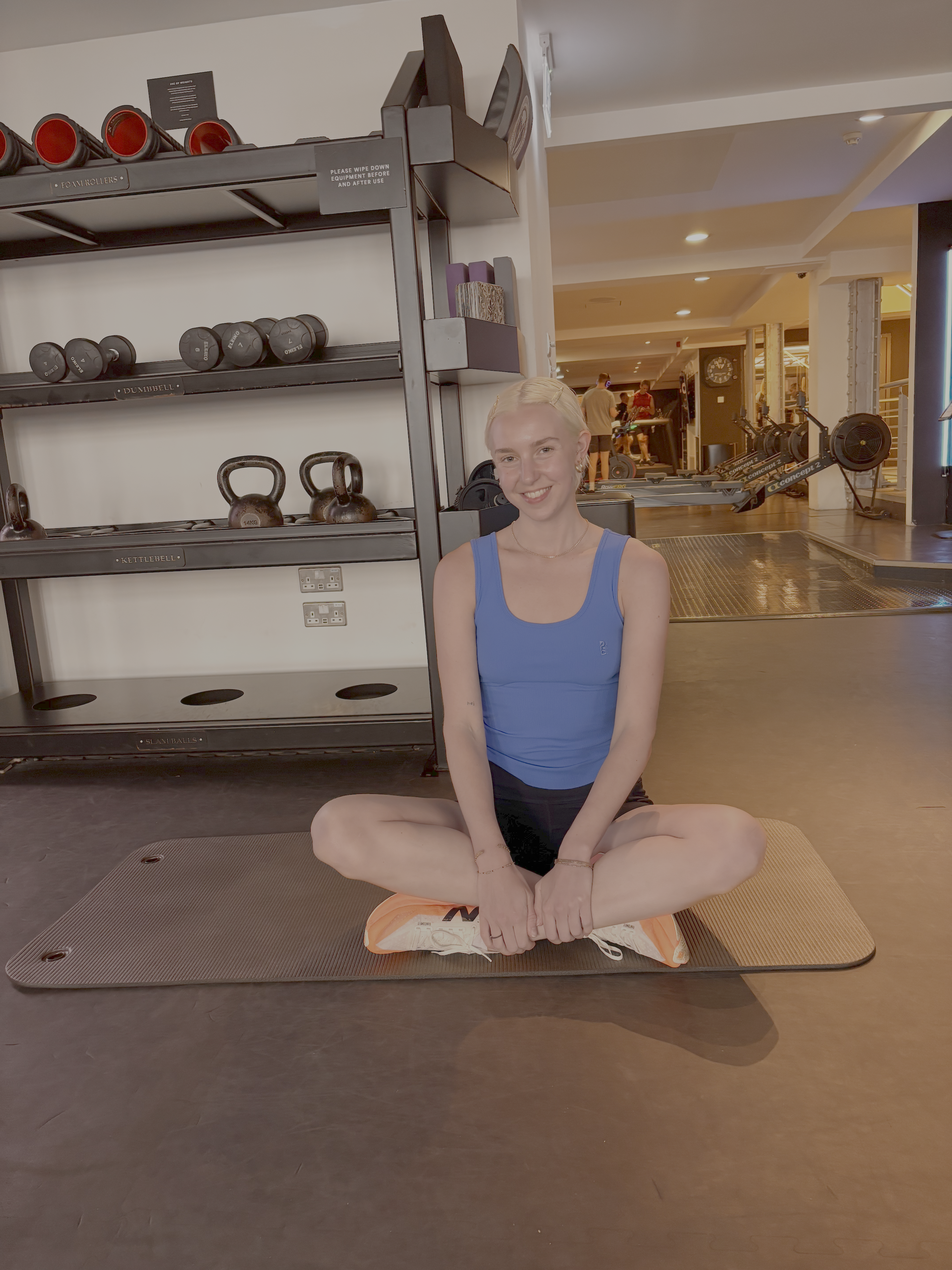
Ashleigh post-open leg rocker practice
Shop MC UK's go to fit kit now:
Which Are the Best Alternative Exercises to the Pilates Open Leg Rocker?
The open leg rocker isn’t for everyone, and even if it is a move you enjoy, it’s nice to be able to mix up your practice from time to time. “Other exercises that complement the open leg rocker are the Pilates hundred, roll up, rocking like a ball, and spine stretch forward,” says Antoniades-Parsons.
If, after mastering the full version of the open leg rocker, you want to challenge yourself further, Antoniades-Parsons recommends starting to work on your Pilates teaser, which she calls “the ultimate control move.” For more inspiration, head to our guide to some of the best at-home Pilates moves.

A former heptathlete, Ashleigh is a freelance journalist, specialising in women’s health, wellbeing and lifestyle, with words in Stylist, Cosmopolitan, Glamour and Marie Claire. She’s also the Co-Founder of Sunnie Runners, an inclusive London based run club.

